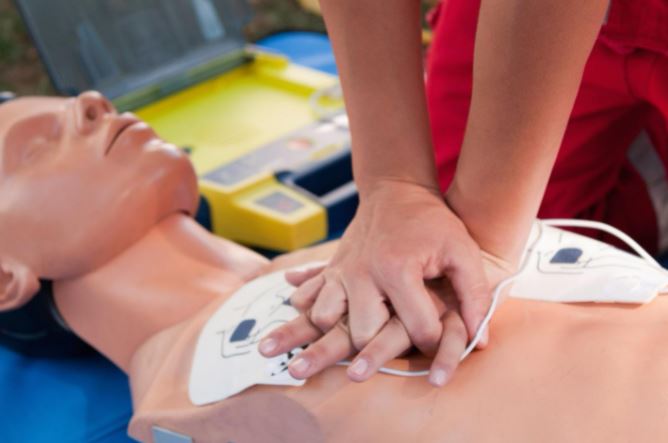 When people think about saving a life, they think of running into a burning building. They should think about cardiopulmonary resuscitation (CPR).
When people think about saving a life, they think of running into a burning building. They should think about cardiopulmonary resuscitation (CPR).
Nearly 400,000 cardiac arrests occur every year, with a 92 percent fatality rate. Yet CPR can double a person’s chance of survival if performed within a few minutes of an attack. You should learn it as soon as possible.
What can you use CPR for? When do you know it’s necessary? What are its major steps, and where can you learn it?
Answer these questions, and you can save a life today. Here is your quick guide.
CPR Is Versatile
Many people think that CPR is for a cardiac arrest. That is true. If someone is having a heart attack, CPR can induce their heart to pump blood to important organs.
But CPR works for more than one emergency situation. It can help when someone is choking or having a stroke or allergic reaction. These emergencies can cause the heart to shut down.
Signs of Cardiac Issues Are Varied
Watch a heart attack in a movie, and you’ll see an actor grab their chest and fall down. This is rarely the case with a heart attack.
A person may experience chest discomfort. But they can also feel pain in their arm, back, or stomach. They may encounter shortness of breath, or they may feel nauseous or lightheaded.
These symptoms overlap with numerous conditions, including indigestion. This leads many people not to seek help, which can cause complications. Knowing CPR allows you to respond right away and prevent heart damage from occurring.
Someone can suffer a cardiac issue at any moment. Some people are more susceptible to heart attacks because of their genetics. A light jog can induce one, so you need to respond immediately.
You Can Perform CPR
CPR is easy to perform. You need to clear the airway of the person who is having symptoms.
Remove objects from their mouth and around their face. If they are choking on something, perform the Heimlich maneuver.
You must then perform compressions. Put the heel of your dominant hand on the middle of their chest. Place your other hand on top and lace your fingers together. Place another hand on top & lace your fingers together.
Position yourself, so your shoulders are over your hands. Then compress on the chest at a rate of 100 compressions per minute.
You should take a class and get proper certification before performing it. Visit websites for training companies, or take a look at your community center’s schedule.
You Can Save a Life
CPR is the best way to save a life. You can help someone when they have a heart attack, stroke, or drowning experience.
A heart attack can present in several ways. A person can sustain one in any public space or during any amount of physical exertion.
Anyone can perform CPR, even if they don’t have official training. Make sure the person can breathe, then press up and down on their chest repeatedly.
Emergency training is essential, and part of training is learning more details. Follow our coverage for more emergency response guides.




